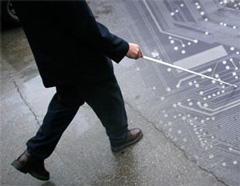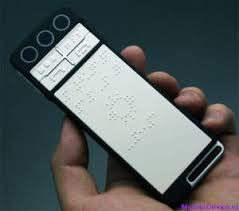Metro for the blind
 Metro is the most populous public transport in any metropolis. Public means adapted for all residents of the city, and did the creators of the subway think about the convenience of the subway for people who are not like everyone? .. (in this case, this is the St. Petersburg metro) I decided to touch the question of convenience of the metro for the blind and to present their ideas for improving the conditions of use of the metro for them.
Metro is the most populous public transport in any metropolis. Public means adapted for all residents of the city, and did the creators of the subway think about the convenience of the subway for people who are not like everyone? .. (in this case, this is the St. Petersburg metro) I decided to touch the question of convenience of the metro for the blind and to present their ideas for improving the conditions of use of the metro for them. For a start, you can select people with a cane a kind of "strip". So that they can detect it at the tip of the cane, you need to place a magnet (for example, neodymium, so that it is easier), on the floor a metal plate with a width of, for example, about 2-5 cm, so as not to disturb the existing architectural beauty of the metro, you can disguise them place under the floor at a short distance.
Selecting this zone as a separate lane will help the blind people not to push them, which causes a violation of the guideline. In turn, for the general mass, plus will be in the absence of people slowly moving (because of a cane) among the crowd.
For more convenience, so that they do not have to confuse the lines (although as far as I understand now they have to act only from memory), I suggest that for each line of the metal plate, they should not have a single piece, but as follows:
1 line ._._._._._._.._._._
2 line ._ _._ _._ _._ _._
3 line ._ _ _._ _ _._ _ _
or morse code
etc., which again makes orientation easier for the blind.
')
In the Kiev metro they were going to or have already introduced sound sensors that are similar to those installed at traffic lights. But for the metro, their inconvenience will be the following: firstly, there is a higher flow of people here, and secondly, it will be very difficult for workers to get used to the constant squeaking.
The following addition is possible to use the audio system inside the metro, which has several channels with various information that is not available to ordinary people with ordinary means. Also, various other types of data can be transmitted over this wireless channel (the following example).
In order for other text ads to be accessible to the blind, you can send mini texts that you can then read to a gadget that can physically reproduce any text using Braille (in fact, it’s easier to use an automatic reader that mimics your voice) .
The latter two tools can be used to distribute advertising as well. And no one bothers to use the above methods for land orientation.
I will return to the question asked at the beginning, "did the creators of the metro think about the convenience of the metro for those who are not like everyone else?" My personal conclusion is no, because the only thing that somehow resembles one of the above solutions is the embossed stripes on the edges of the platforms, which unfortunately are not numerous and are the only solution. (In the Moscow metro, there is a plus in that the announcements of stations for directing to the center / from the center are announced by male and female voices, respectively.)
PS Technologies that will help implement some ideas

Braille on the touch screen

Touchphone for the blind

Touch & Go - GPS Navigator for the Blind
Virtual tangible maps
The track for the blind in Shanghai

Source: https://habr.com/ru/post/69435/
All Articles